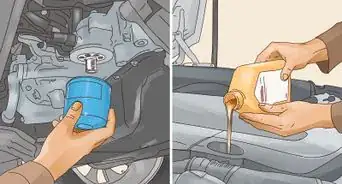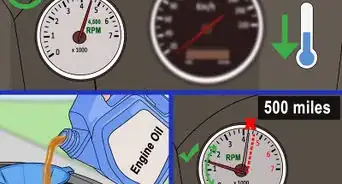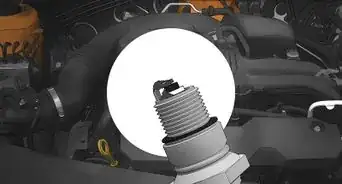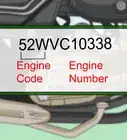wikiHow is a “wiki,” similar to Wikipedia, which means that many of our articles are co-written by multiple authors. To create this article, 19 people, some anonymous, worked to edit and improve it over time.
This article has been viewed 484,445 times.
Learn more...
The Ford Motor Company has put identification number tags on some of its motors since the mid-1950s and on all of its motors since January 1964. These tags tell you the month and year of production, the model year, the change level number, and the CID (cubic inch displacement). In the event that you cannot find the tags, you can also use a casting number to obtain certain information.
Steps
Using the Identification Tag
-
1Use the number of valve cover bolts to narrow down the type of engine you have in front of you. Valve cover bolts are the big bolts on the top of the engine, holding down the plate (usually marked "Ford") on top of the valves. The number of bolts corresponds to your engine type, which will help you locate the more useful ID tag.
- 2 bolts: 239/256/272/292/312
- 5 bolts: 332/352/360/361/390/391/406/410/427/428
- 6 bolts: 221/260/289/302/351W
- 7 bolts: 429/460
- 8 bolts: 351C/351M/400
-
2Locate the ID tag under coil attaching bolts for six-cylinder and some eight-cylinder engines. The tag is a series of numbers and letters etched in and used to decipher the year, make, and model of you engine. It is found underneath the bolts on the left or right side of the engine, near the front of the car. You can find the tag here on all six-cylinder engines made after 1964, and on some V8 engines.[1]
- The tag is roughly three inches long, half an inch wide, and made of aluminum.
- If you are unsure what kind of engine you have, think back to the valve cover bolts as you work through the following steps. This will help you narrow down your options.
Advertisement -
3Check under the dipstick attaching bolts on eight-cylinder, 352 Model engine. Check under the dipstick, which is the small, plastic-handled piece that lets you check your oil.
-
4Look under the heat indicator bulb, carburetor attaching stud, and ignition coil bolt if you still can't find the tag. These are the last few places the tag might be. If it is not there, it may have been removed, fallen off, or only be visible when the engine is not in the car. Depending on where you find the tag, you can learn something about the engine:[2]
- Indicator Bulb: 360, 330, 391 engines.
- Dipstick Tube: 352 engines.
- Carburetor Stud: 401, 477 534 engines.[3]
-
5Learn to read the ID tag appropriately. Once you've found the identification tag, you need to know how to read it to get the right information. Luckily, the tags are simple to breakdown. From upper left to bottom right:[4]
- Cubic Inch Displacement (CID): The first three numbers, found in the upper left corner, tell you the size of the engine.
- Manufacturing Plant: The single letter to the right of the CID is where the engine was built. "C" is for Cleveland, "E" is for Ensite, Canada, and "W" is for Windsor, Canada.
- Year: The next two numbers are for the year the engine was built. 70, for example, would mean it was made in 1970.
- Month Built: This hyphenated number and letter correspond to the month. The months are in alphabetical order, so A = January and M = December. There is no "i" so people don't confuse it the number 1. 0-A would mean January 1970, 5-C March 1975, etc. (assuming the year code is for the 70's).
- Engine Code Number: This final 3-digit number is the ID of your particular engine. You can look up this code online to see the specs of your current engine.[5]
Decoding Casting Tags
-
1Looks for nine-digit casting tags to learn more about your engine's make and model. The casting tag is etched into your motor when it is created, and is used to help find the right parts if you need a replacement. This code also packs a large amount of information in it that will help you get to know your engine better.
- You may need to clean the engine with a rag and some degreaser if it is too dirty to see the letters.
- This code is usually on the side of the engine, but you might not be able to see it when the engine is in a car with older models. Use a light to scan both sides of the engine to find it.[6]
- Ex.C5AE-9425-B[7]
-
2Read the first two digits in the identification tag to find the year the engine was made. This will be a letter. If the letter is a "B," it means that the engine was built in the 1950s. Each decade after that has its own succeeding letter; "C" designates the 1960s, "D" designates the 1970s, and so on. The digit after the letter is the actual year. So C9 would be 1969, E4 would be 1984, etc.[8]
-
3Read the third digit in the casting number to determine the engine design. This will be a letter, and it signifies the basic design of the vehicle as shown below. Of course, this code should match up with the car that it is in (i.e. a Mercury could be coded E5M), but you may be dealing with standalone engines or redesigned cars.[9]
- "A" - Generic and full-size engine
- "D" - Falcon
- "E" - Truck
- "F" - Foreign Trans-Am racing
- "G" - 1961 to 1967 Comet/1968 to 1976 Montenegro
- "H" - 1966 to 1982 Heavy truck
- "J" - Industrial Ford
- "L" - Lincoln
- "M" - Mercury
- "O" - 1967 to 1976 Ford Torino/all Ford Fairlane
- "S" - Thunderbird
- "T" - Truck
- "W" - Cougar
- "Y" - Meteor
- "Z" - Mustang
- "6" - Pantera
-
4Make sure that the fourth digit is always an "E." This digit stands for the type of part. E stands for "Engine," so this should always be the fourth digit you see when identifying Ford motors.
-
5Read the next 4 digits, which are the last digits in the motor number. These four numbers will always be between 6000 and 6898, which describes the part numbering of the generic engine assembly. Different parts of the motor will correspond to different four-digit numbers.[10]
-
6Check the last digit, usually a letter, to determine the version of your part. If your engine is modeled after the original design, this letter will be A. If it is the third manufactured version of the engine, it will be a C, and so on. This digit can be up to three digits long. For example, AB would be the 28th version — 26 for A-Z, then two for A-B.[11]
Community Q&A
-
QuestionWhat does the number atop the motor mean?
 Community AnswerThat is a part number, not the motor number which is stamped on the block. You may get a clue by googling the part number. The letters indicate a part from the cooling system. The easy way to identify the motor, if it's the original, is by the VIN (vehicle identification number). Using that, you can get all the information (including manuals) from Ford.
Community AnswerThat is a part number, not the motor number which is stamped on the block. You may get a clue by googling the part number. The letters indicate a part from the cooling system. The easy way to identify the motor, if it's the original, is by the VIN (vehicle identification number). Using that, you can get all the information (including manuals) from Ford. -
QuestionDoes Ford make a V8 with a rear distributor?
 Community AnswerYes, they do, but they are pretty hard to find.
Community AnswerYes, they do, but they are pretty hard to find. -
QuestionI have a Ford 460 engine. The only number I can find on it is D3TE-AE. What year is this?
 Community AnswerIt's a 1973 engine. D = '70s; 3 = year; E = engine. It's probably a Galaxy.
Community AnswerIt's a 1973 engine. D = '70s; 3 = year; E = engine. It's probably a Galaxy.
Things You'll Need
- Degreaser
- Wire brush
- Rags
References
- ↑ http://www.fordification.com/tech/engineIDtags.htm
- ↑ http://www.wrljet.com/fordv8/idtag.html
- ↑ http://www.fordification.com/tech/engineIDtags.htm
- ↑ http://www.fordification.com/tech/engineIDtags.htm
- ↑ http://www.wrljet.com/fordv8/idtag.html
- ↑ http://www.thedirtforum.com/fordcastingnumberlocations.htm
- ↑ http://www.mustangtek.com/FordDecode.html
- ↑ http://www.mustangtek.com/FordDecode.html
- ↑ http://automotivemileposts.com/ford/fordpartnumbers.html
About This Article
To identify a Ford motor, start by checking valve cover bolts on the top of the engine for Ford markings. If the bolts are unmarked, look for an ID tag for manufacturer information. Tags can be found under coil attaching bolts for 6-cylinder engines and some 8-cylinder engines, or under the dipstick attaching bolts on other 8-cylinders. If you can’t find the tag there, look under the heat indicator bulb, carburetor attaching stud, or the ignition coil bolt, and check the ID tag for information like engine code number. To learn how to identify a Ford motor using casting tags, keep reading!
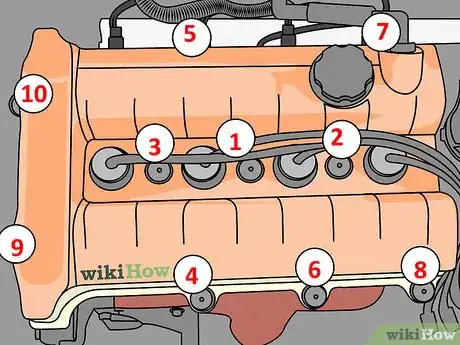
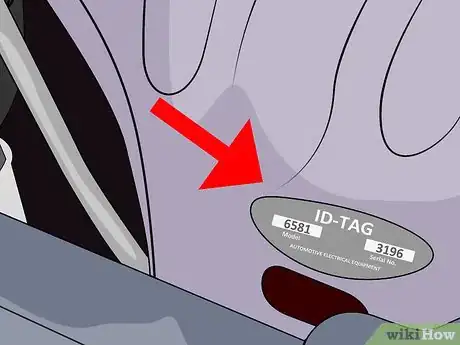

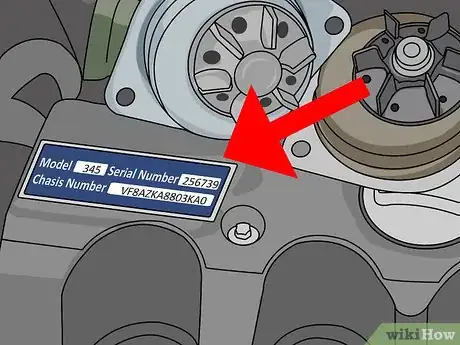
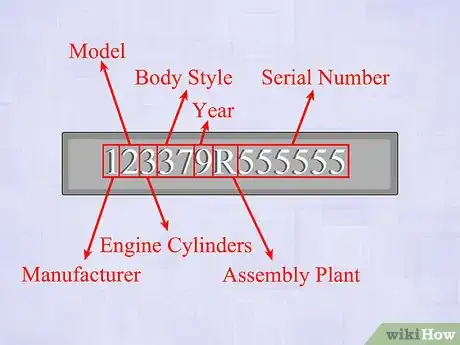
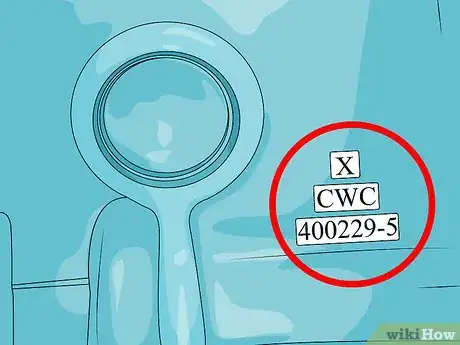


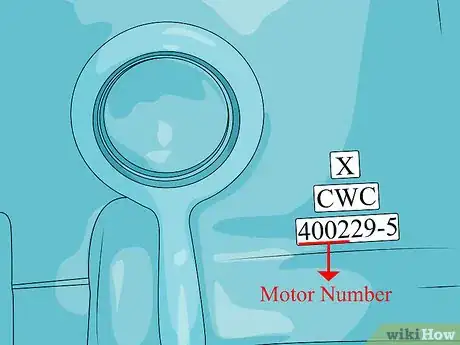
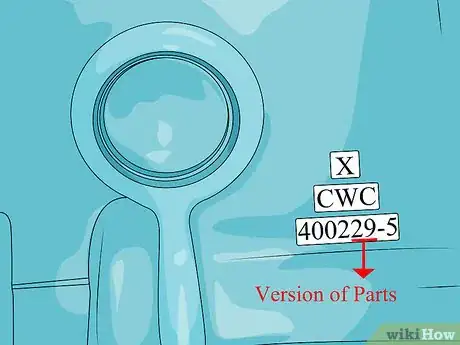

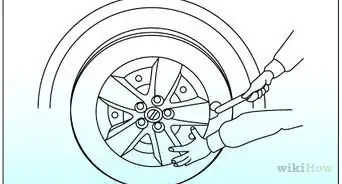
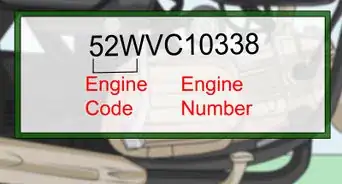
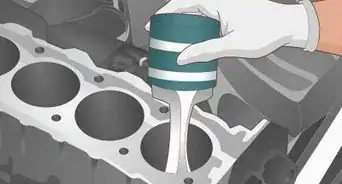
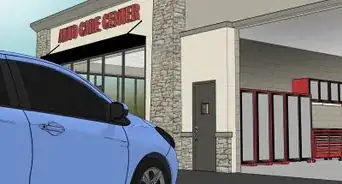
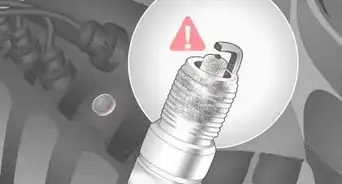

-Step-13.webp)

